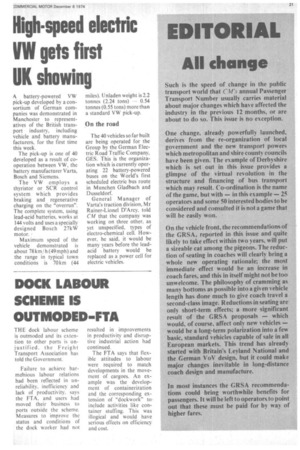All change
Page 23

If you've noticed an error in this article please click here to report it so we can fix it.
Such is the speed of change in the public transport world that ( tf",, annual Passenger Transport Number usually carries material about major changes which has e affected the industry in the previous 12 months, or are about to do so. This issue is no exception.
One change, already powerfully launched. derives from the re-organization of local gos ernment and the new transport powers which metropolitan and shire count) councils ha. e been given. The example of 1)erby shire which is set out in this issue provides a glimpse of the irtual revolution in the structure and financing of bus transport which ma) result. Co-ordination is the name of the game. but with — in this example -25 operators and some 50 interested bodies to be considered and consulted it is not a game that will be easil) won.
On the s chicle front. the recommendations of the CrRSA. reported in this issue and quite likely to take effect within two sears, will put a sizeable cat among the pigeons. The reduction of seating in coaches will clearly bring a whole new operating rationale; the most immediate effect would be an increase in coach fares, and this in itself might not be too unwelcome. The philosophy of cramming as many bottoms as possible into a Oren vehicle length has done much to gis e coach tray el a second-class image. Reductions in seating are only short-term effects; a more significant result of the GRS,k proposals — which would, of course. affect only new vehicles -would be a long-term polarization into a few basic. standard vehicles capable of sale in all European markets. This trend has alread started with Britain's Leyland National and the German VoN' design, but it could make major changes ine. itable in long-distance coach design and manufacture.
In most instances the GRSA recommendations could bring worthwhile benefits for passengers. It will be left to operators to point • out that these must be paid for b) was of higher fares.












































































































































